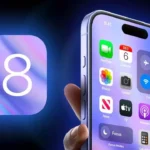In the realm of React Native development, mastering common interview questions is crucial for showcasing proficiency and landing desirable roles. These questions delve into various aspects, including React Native’s inner workings, JavaScript fundamentals, and essential libraries like Redux Toolkit and SAGA. Understanding these concepts not only demonstrates technical prowess but also showcases the ability to create efficient, scalable, and performant mobile applications.
Let’s explore some of these frequently asked questions and delve into detailed explanations for a comprehensive understanding.
1. Threads in React Native: In React Native, threads refer to concurrent processes that handle tasks simultaneously. React Native uses a single main thread for UI rendering and interaction. However, it leverages separate threads for handling asynchronous tasks like network requests, image processing, or heavy computations. These background threads ensure that the UI remains responsive while performing complex operations in the background. Developers can also create custom threads or use libraries like Worker Threads for specific tasks, optimizing performance and user experience.
2. UI Component Processing in React Native: React Native processes UI components using a virtual DOM (Document Object Model) similar to React for web. When a component’s state or props change, React Native efficiently updates the virtual DOM and then applies the necessary changes to the actual UI. This process, known as reconciliation, minimizes DOM manipulation and enhances performance. Additionally, React Native leverages native rendering components for different platforms (iOS, Android) to ensure native-like performance and appearance.
3. Differences between Functional and Class Components and Their Lifecycles: Functional components are JavaScript functions that accept props and return JSX elements, making them simpler and more lightweight. Class components, on the other hand, are JavaScript classes that extend React.Component and have additional features like state and lifecycle methods.
- Lifecycles: Class components have lifecycle methods like componentDidMount, componentDidUpdate, and componentWillUnmount for managing component initialization, updates, and cleanup. Functional components use Hooks (like useEffect) to achieve similar lifecycle functionality.
- Re-rendering: Functional components can optimize re-renders using React.memo or useMemo for memoization, while class components rely on shouldComponentUpdate and PureComponent for optimization.
4. Communication between Native and React Native: React Native provides modules like Native Modules and Native UI Components for seamless communication between JavaScript code (React Native) and native code (Java for Android, Objective-C or Swift for iOS). Native Modules enable JavaScript to invoke native functionalities and vice versa, allowing access to platform-specific APIs and features. This communication is crucial for integrating platform-specific functionalities like camera access, location services, push notifications, etc., into React Native apps.
For JavaScript-related questions:
1. Hoisting: Hoisting in JavaScript refers to the behavior where variable and function declarations are moved to the top of their containing scope during the compilation phase. This allows variables to be used before they are declared, although it’s important to note that only the declarations are hoisted, not the initializations.
2. let vs. const vs. var: — var: Declares a variable globally or locally to a function, and its value can be reassigned.
- let: Declares a block-scoped variable that can be reassigned but not redeclared within the same scope.
- const: Declares a block-scoped constant variable whose value cannot be reassigned after initialization. However, for objects and arrays declared with const, their properties or elements can be modified.
3. Redux Toolkit and SAGA:
- Redux Toolkit: Redux Toolkit is a set of tools and utilities that simplifies Redux state management by providing a predefined folder structure, reducing boilerplate code, and integrating commonly used Redux middleware like Redux Thunk for handling asynchronous actions.
- SAGA (Redux Saga): Redux Saga is a Redux middleware library that focuses on managing side effects (e.g., asynchronous operations like API calls) in a declarative and non-blocking way. It uses generator functions to handle complex asynchronous flows, making code more readable and maintainable compared to traditional callback-based approaches.
4. Deep Copy vs. Shallow Copy:
- Deep Copy: Creates a new copy of an object and its nested objects, ensuring that changes made to the original object do not affect the copied object and vice versa.
- Shallow Copy: Creates a new copy of an object but only copies the top-level properties and references to nested objects, so changes to nested objects in the copied object may affect the original object and vice versa.
5. Shorthand Properties: Shorthand properties in JavaScript allow you to simplify object creation by using shorthand notation for object properties. For example, instead of writing { x: x, y: y }, you can simply write { x, y }. This shorthand notation enhances code readability and reduces redundancy.
Conclusion:
Mastering common interview questions in React Native and JavaScript is a significant step towards excelling in mobile app development roles. With a solid understanding of topics like UI component processing, lifecycles, Redux Toolkit, and more, developers can demonstrate their expertise and contribute effectively to projects.
Happy coding and best of luck with your React Native interviews!
Sandeep Parish
-
April 19, 2025
-
October 17, 2024
-
October 5, 2024











